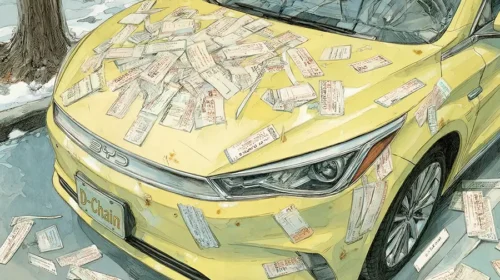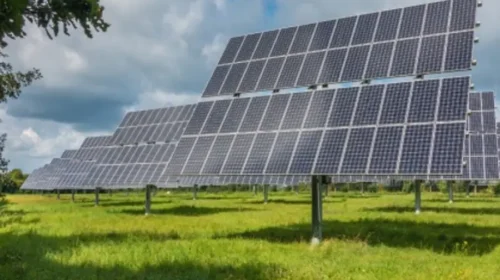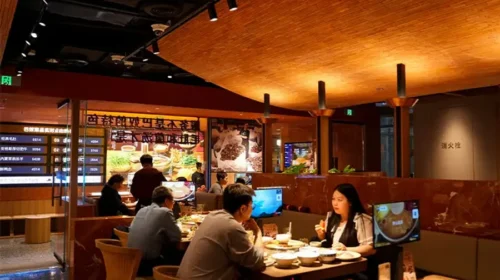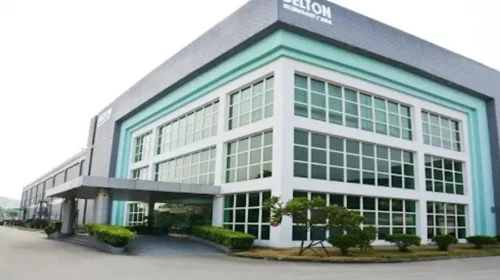Xinte to spread clean power building burden using asset backed securities
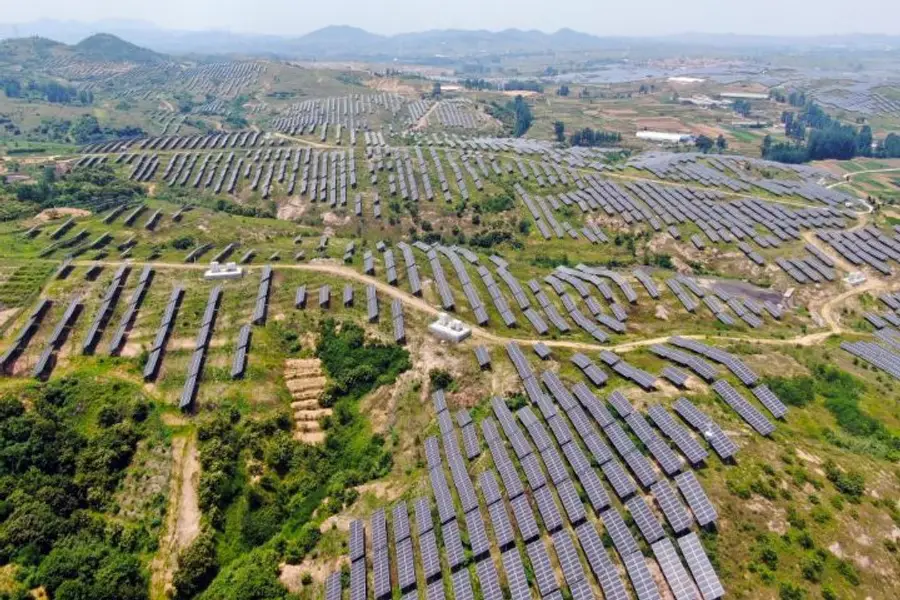
The polysilicon producer and green power farm operator plans to issue ABS backed by two of its wind power projects, which will be traded on the Shanghai Stock Exchange
Key Takeaways:
- Xinte plans to issue up to 3 billion yuan worth of asset-backed securities backed by two of its wind farm projects
- The solar and wind farm builder has 21 billion yuan worth of mortgaged asset commitments, many tied to power plants under China’s recent green energy buildup
By Doug Young
After a massive building binge that has made China home to half the world’s solar and wind power generating capacity, Beijing looks set to start spreading around the financial burden created by all of that construction. Put differently, the billions of dollars that have gone into this building binge could soon be spread through the country’s massive system of state-owned investors and enterprises.
The spreading of such massive spending across a vast array of investors is something that China is uniquely qualified to do, since a huge portion of the country’s economy is still under state control is often called on to invest this way as a sort of policy tool. But it also poses risk to the entities that end up buying such assets, which are often built as much to meet government policy objectives as for their commercial viability.
The latest signal of how Beijing plans to spread the financial burden for all of its new solar and wind farm construction comes from Xinte Energy Co. Ltd. (1799.HK), which has recently morphed from a maker of solar energy materials to a solar and wind farm builder and operator. Such a transition isn’t unheard of in this industry, since many solar equipment companies have turned to solar farm construction and operation to create more demand for their products. But Xinte stands out as a somewhat extreme case, since solar materials have gone from accounting for about 70% of its revenue just three years ago to just 13% in the first half of 2025.
That transition has left Xinte saddled with a growing debt burden related to all of its solar and wind farm construction, which it now appears ready to partially unload through the issue of asset-backed securities (ABS), according to an announcement last Thursday to the Hong Kong Stock Exchange.
Such securities allow companies to securitize their assets and sell them off to investors for trading on secondary markets. Many will recall that such assets also were the primary cause behind the global financial crisis of 2008 and 2009 after U.S. mortgage lenders created ABS backed by dubious U.S. home mortgages. Those ABSs were then sold off to investors around the world, resulting in huge losses when many of the home mortgages defaulted.
In Xinte’s case, the company plans to use two of its many solar and wind power projects to launch its ABS program, according to its announcement. Those ABS will then be listed on the Shanghai Stock Exchange, where any stock market investor can buy them. While that could include ordinary retail and private institutional investors, we suspect that many of the actual buyers will be other state-run organizations looking to help Beijing meet its policy objectives.
In this case those objectives include a massive buildup that is part of an ambitious carbon reduction plan announced by President Xi Jinping at the UN General Assembly meeting last month. Under that plan, China aims to cut its carbon emissions by 7% to 10% by 2035, and generate more than 30% of its domestic energy from non-fossil fuels within the next 10 years.
Just the beginning?
Xinte’s plan is the first we’ve seen that proposes using ABS and other financial instruments to let a wide range of investors support the country’s solar and wind power building binge. Following that binge – which is still in progress – the country now has more than 1,000 GW of installed solar capacity, equal to half the world’s installed capacity for the clean energy source.
Under the first phase of its new plan, Xinte will issue up to 1.5 billion yuan ($210 million) worth of ABS tied to two existing green power projects. The larger of those is Xinyuan, a 200 MW ultrahigh voltage power transmission wind power project in Zhengxiangbaiqi area of Inner Mongolia, which has an appraised value of 1.37 billion yuan. The other is Rongsheng, a 100 MW wind power project in Northeast China’s Liaoning province with an appraised value of 532 million yuan.
Xinte says it could ultimately issue up to 3 billion yuan worth of ABS under its current shelf registration quota, which could include other assets as well. The company certainly has plenty of such assets that it could securitize, with 21.6 billion yuan worth of mortgaged asset commitments on its balance sheet as of June, according to its latest financial report. While some of those are related to its manufacturing operation, many are solar and wind farms the company is currently building and operating.
As recently as three years ago, Xinte was mainly a producer of polysilicon, the main ingredient used to make solar cells that convert sunlight into electricity. But polysilicon prices have crashed in the last year after China built up huge excess capacity, sending most producers into the red and causing their related revenues to tank. Xinte’s own revenue from polysilicon plummeted 83% in the first half of the year to just 979 million yuan from 5.87 billion yuan a year earlier.
At the same time, Xinte’s revenue from solar and wind farm construction and operation rose about 5% year-on-year to 4.65 billion yuan, accounting for about 64% of the company’s total revenue of 7.3 billion yuan in the first half of the year. By comparison, that portion of the company’s business accounted for just a quarter of the company’s revenue in 2022.
Investors weren’t too excited about the latest ABS plan, with Xinte’s stock falling 7.1% on Friday the day after the announcement. Perhaps they worried that the plan reflected stress that Xinte is feeling from a growing debt burden, or perhaps they worried the company will just plow funds that it raises from the ABS plan into construction of yet more solar and wind farms.
The company’s stock currently trades at a depressed price-to-book (P/B) ratio of just 0.36 and price-to-sales (P/S) of 0.70. But such low ratios are relatively common for polysilicon makers these days due to the fact that everyone is losing massive money. Xinte lost 256 million yuan in the first half of the year, though that was a significant improvement from its 887 million yuan loss a year earlier.
At the end of the day, the ABS plan looks like a relative positive for Xinte and other solar and wind farm builders, since such plans should help to relieve their debt burdens. But such relief is likely to be temporary, since companies like Xinte have clearly become an important vehicle for Beijing to execute its ambitious buildup of new solar and wind farms.
To subscribe to Bamboo Works free weekly newsletter, click here
